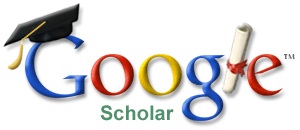Pengaruh Adopsi Teknologi Informasi Pada Peningkatan Daya Saing Usaha Kecil Dan Menengah (Studi Pada UKM Di Wilayah Daerah Istimewa Yogyakarta)
Abstract
Keywords
Full Text:
PDFReferences
Adeosun, O., Adeosun, T.H., and Adetunde, I.A., 2009 “Strategic Application of Information and Communication Technology for Effective Service Delivery in Banking Industry.” Journal of Social Science, 5(1), 47-51.
Apulu, I., Latham, A. 2011 “Driver for Information and Communication Technology Adoption: A Case Study of Nigerian Small and Medium Sized Enterprises.”International Journal of Business and Management, Vol. 6, No. 5. Berisha-Namani, Mihane., 2009 "The role of information technology in small and medium sized enterprises in Kosova." Fulbright Academy Conference.
Chin W Wynne, Todd Peter. 1991. “One The Use Usefullness, ease of use of structural equation Modelling in MIS Research : A note of Caution”. Management Information System Quarterly, 21.
Cusshing E Barry. 1993. Accounting Information System and Organization, edisi tiga, terjemahanRuchyat Kosasih, Penerbit Erlangga, Jakarta.
Davis, F.D. 1989. “Perceived Usefulness, Perceived Ease of Use dan Acceptance of Information System Technology”. MIS Quartery, Vol. 13, No. 3, h.319-339.
Davis, Fred D., 1989, Measurement Scales for Perceived Usefulness and Perceived Ease of Use, http://wings.buffalo.edu/mgmt/courses/mgtsand/success/davis.html, (Diakses 10/4/2015 pukul 20.09)
Ghozali, I. 2005. Model Persamaan Struktural: Konsep dan Aplikasi dengan Program AMOS Ver. 5.0.Semarang BP Universitas Diponegoro
Hartwick, J., dan H. Barki 1994. Explaining The Role of User Participation in Information System Use. Management Science, Vol. 40, No. 4, April, h.440-465.
Jogiyanto. 2003. Metode Penelitian Bisnis : Salah Kaprah dan Pengalaman Pengalaman. Yogyakarta : Andi Offset Iqbal, M., Supriyati, E. 2012. Faktor Adopsi Internet Marketing untuk Usaha Mikro dan Usaha Kecil Menengah (UKM) di Kabupaten Kudus dengan SEM (Structural Equation Model) dan Framework Cobit 4.1. Jurnal Simetris, 3(1), 1-6.
Li, S., Ragu-Nathan, B., Ragu-Nathan, T. S.,and Rao, S. Subba. 2006. “TheImpact of Supply Chain ManagementPractices on Competitive Advantage and Organizational Performance”. Elsevier Ltd :Omega, 34, 107-124.
Lefebvre Eric Coad, Peter dan Jeff de Luca. 1999. Java Modeling Color with Uml: Enterprise Components and Process with Cdrom. Prentice Hall PTR, 1999.
Maldeni, H. M. C. M., dan Sanath Jayasena., 2009 "Information and communication technology usage and bank branch performance." International Journal on Advances in ICT for Emerging Regions (ICTer) 2.2.
Mukhyi, M.A. dan Mujiyana, 2008, Penerapan Teknologi Sistem Informasi dan Teknologi Tepat Guna Pada Usaha Kecil Menengah, Proceeding, Seminar Ilmiah Nasional Komputer dan Sistem Intelijen (KOMMIT 2008) Auditorium Universitas Gunadarma. Depok.
Oktavia, P. N. 2014. “Analisis Dampak Servant Leadership terhadap Competitive Advantage”. Business Accounting Review, 2(2), 244-251.
Palupi, M. & Tjahjono, H.K. 2008. Aplikasi Technology Acceptance Model (TAM) dengan mempertimbangkan gender pada perilaku penggunaan internet. Jurnal Ekonomi dan Bisnis, 9(2): 147-153.
Pavic, S., Koh, S.C.L., Simpson, M., Padmore, J. 2007. Could e-Business Create a Competitive Advantage in UK SMEs? Benchmarking: An International Journal 14(3), 320-351. 2007
Pebruati.S., Handayani S.R., 2012. “Pengaruh Aplikasi Teknologi Informasi dalam Peningkatan Daya Saing Perusahaan” Jurnal Profit Volume 7 no. 1 halaman 62-75.
Sharda, R., Barn S.H., dan Mc Donnell J.C. 1998. Decision Support System Effectiviness A Review dan Empirical Test. Management Science, Vol. 32, No. II, , h.1492-1512.
Tangke Natalia. 2004. “Analisa Penerimaan Penerapan Teknik Audit Berbantuan Komputer (TABK) dengan Menggunakan TechnologyAcceptance Model (TAM) pada Badan Pemeriksa Keuangan (BPK) RI” Jurnal Akuntansi & Keuangan Vol. 6, No. 1, Mei 2004: 10- 28
Tjahjono, H.K. & Palupi, M. 2014. Model konseptual intensi berwirausaha berbasis teknologi informasi (TI). Jurnal Bisnis Teori dan Implementasi. 5(1): 1-10.
Tulus Tambunan. 2002, Usaha Kecil dan Menengah di Indonesia, Jakarta : Salemba Empat.
Tumar Sumiharjo. 2008, Daya Saing Berbasis Potensi Daerah, Bandung : Puskomedia.
Wahid Fathul, Iswari. 2007, “Adopsi Teknologi Informasi oleh Usaha Kecil dan Menengah di Indonesia”.Seminar Nasional Aplikasi Teknologi Informasi (SNATI 2007).
Wilkinson, Cerullo., dan Raval Wong. 2000. Accounting Information System. Fourth Edition, New York : John Wiley and Sons Inc.
https://nurulindarti.wordpress.com/2007/06/23/rendah-adopsi-teknologi- informasi oleh-ukm-di-indonesia/. (Diakses 12/06/2015 pukul 14.05)
http://www.tribunnews.com/bisnis/2015/03/23/dukung-pengusaha-di-yogya-xlluncur kan-solusi-xcloud-usahawan-10. (Diakses 22/06/2015 pukul 20.15)
Refbacks
- There are currently no refbacks.
Copyright (c) 2018 Jurnal Manajemen Bisnis
Office:
Ruang Jurnal Manajemen Bisnis,
Gedung Ki Bagus Hadikusuma (E4) Lantai 2, Kampus Terpadu Universitas Muhammadiyah Yogyakarta,
Jalan Brawijaya (Lingkar Selatan), Tamantirto, Kasihan, Bantul, Daerah Istimewa Yogyakarta, Indonesia, 55183
Website: journal.umy.ac.id/index.php/mb - E-mail: mabis@umy.ac.id
Phone: +62 274 387 656 (ext: 118)
Jurnal Manajemen Bisnis is licensed under Creative Commons Attribution-ShareAlike 4.0 International (CC BY-SA 4.0)







